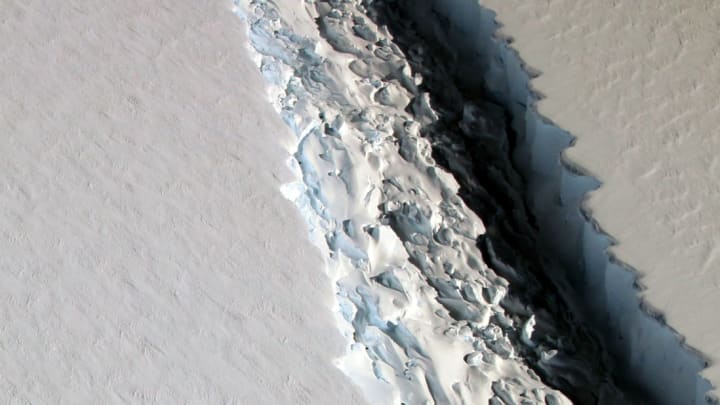An Iceberg the Size of Delaware Is About to Break Away From Antarctica

The crack in the Antarctic ice has been growing for years. Now scientists say a major break is coming—an event that could set in motion the disintegration of the entire 19,000-square-mile Larsen C ice shelf.
The entire Larsen ice shelf, comprising Larsen A, B, C, D, E, F, and G, wraps like a crumbling white blanket around the Antarctic Peninsula. The rift in Larsen C started small, as these things do, but with each passing day its expansion accelerates. By June 24, the crack was widening by about 32 feet per day.
Scientists at the UK-based Project MIDAS say a big break is imminent. "We still can't tell when calving will occur," they wrote on their website, "it could be hours, days or weeks—but this is a notable departure from previous observations."
The loss of the Delaware-sized iceberg—one of the largest ever recorded—will be both dramatic and destabilizing for its parent ice shelf.
"When it calves," the researchers write, "the Larsen C Ice Shelf will lose more than 10 percent of its area to leave the ice front at its most retreated position ever recorded. This event will fundamentally change the landscape of the Antarctic Peninsula."
It could also trigger Larsen C's total collapse into the sea, which could, in turn, raise worldwide sea levels by four inches.
The break will be the third major calving from the Larsen ice shelf in recent memory. The area called Larsen A collapsed in 1995, followed by Larsen B in 2002. The latter was double the size of greater London.
The researchers have no evidence directly linking this particular break to climate change, but as a press statement noted, "It is widely accepted that warming ocean and atmospheric temperatures have been a factor in earlier disintegrations of ice shelves elsewhere on the Antarctic Peninsula."